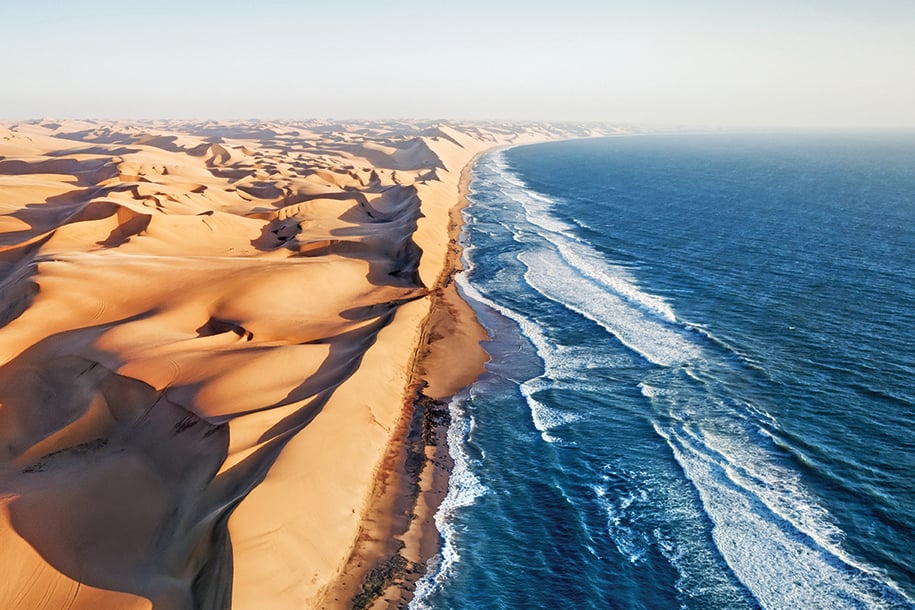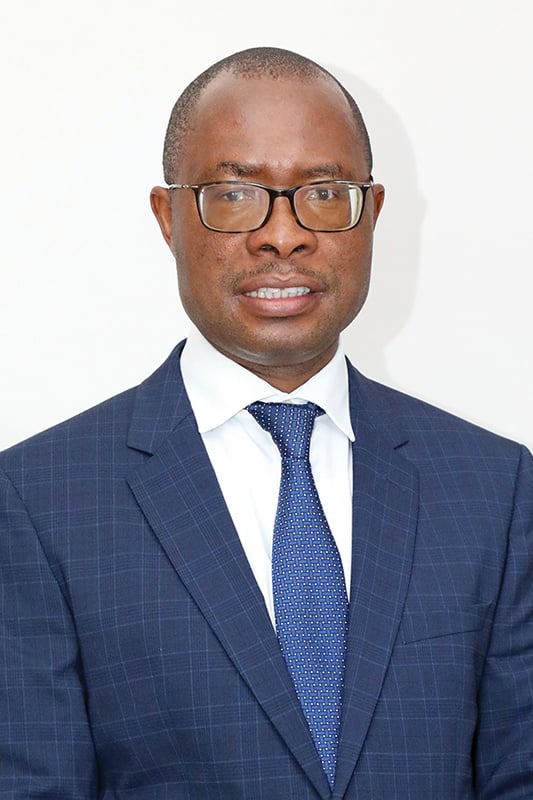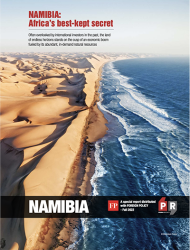Namibia: Africa’s best-kept secret
Having rebounded from recession on the back of a resurgent mining sector, Namibia is advancing into a new growth era with diversification into oil, hydrogen and manufacturing

Shutterstock / Smelov
Last year, Namibia’s gross domestic product (GDP) rose by 2.4% to reach $12.4 billion — an encouraging signal that the remarkable nation, lying near Africa’s southern tip, is bouncing back from a four-year-long recession. It’s a return to form for the vast but sparsely populated country of just 2.5 million people that only gained independence from its neighbor South Africa in 1990. Ever since, it has made continuous strides forward, with its GDP growing by an annual average of 5% in the years leading up to 2016. The underlying upward economic trajectory is founded on stable democracy and good governance, says Ipumbu Shiimi, Minister of Finance and Public Enterprises: “We’ve pursued a solid macroeconomic framework, we’ve been prudent and our exchange rate, which is linked to the South African rand, has been relatively stable. We also have a profitable and well-regulated financial sector that supports the economy.” However, he adds, “We do have challenges. We went through a difficult period from 2016 when commodity prices came down, as our economy is not sufficiently diversified and depends heavily on mining and primary industries.”

Indeed, the expansion seen in 2021 was fueled mainly by surging demand and prices for two of its many mineral resources. As Minister of Mines and Energy Tom Alweendo explains: “Diamonds represent over 50% of our export revenues and we’re the second-largest uranium producer globally. There’s also new interest in the commodities of the future that we have, like lithium and rare-earth minerals.” Mining wasn’t the only sector to post robust results, notes Baronice Hans, managing director of the country’s second-biggest bank by deposits, Bank Windhoek: “Agriculture has done well and will continue to play a large role in driving the economy; besides, all indications point to a strong recovery in tourism, fishing continues to be a solid contributor and retail is showing steady growth.” While established industries have kickstarted the economy, emerging ones are set to transform it. Firstly, this February Shell and TotalEnergies made two huge offshore oil discoveries. “Based on those finds, the oil and gas industry is expected to double our GDP growth. Another sector we’re excited about is green hydrogen, as Namibia is one of the top-three sites in the world for its development,” states Hans. The government is adamant that all of the country’s rich resources are exploited sustainably and in a way that benefits the population, says Deputy Prime Minister and Minister of International Relations and Cooperation, Netumbo Nandi-Ndaitwah: “We can’t accept that raw materials are transferred from Namibia unprocessed. They must be processed and value added to them here.”
The government also wants to diversify the economy by replacing imports with locally manufactured goods. “We’ve identified industries where we have know-how we can add to, such as food processing and inputs for mining. There’s a major opportunity for us to export Namibian-made products to the rest of Africa and beyond as well,” Shiimi comments. That opportunity exists for various reasons: Namibia shares borders with South Africa, Angola, Botswana, Zimbabwe and Zambia, plus it is a member of regional economic blocs and has trade agreements with the U.S., the European Union and other countries. It also boasts world-class ports and Africa’s best road network. Although Namibia is the world’s second-most unequal nation in terms of wealth, it’s officially classified as an upper-middle income country, Nandi-Ndaitwah explains: “That helps us to be recognized for our developmental achievements, but it means financing is only available to us at high rates.” As a result, to realize the country’s goals, the government is targeting private-sector-led growth and, in particular, foreign direct investment.
Report Contents

 Download the PDF
Download the PDF